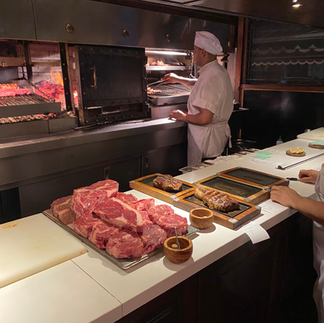A Neighborhood Guide to Buenos Aires
- Will Gerson
- Sep 1, 2024
- 2 min read
Updated: Feb 23
Buenos Aires is a city with an incredible amount of cultural offerings for both visitors and locals alike. Birthplace of tango and mecca of football, the city is also home to the most bookstores in the world, an internationally acclaimed opera house, an eclectic collection of European-influenced architectural styles, and a diverse array of restaurants that highlight the city’s immigrant heritage as well as its strong local porteño identity. The Argentine capital will leave no visitor short of things to do; rather, it will have you wondering how to cram so many neighborhoods and so many meals into your time here.

The city is a traveler’s paradise in what it has to offer, but the logistics of a visit can be complicated. From exchanging money to navigating the metropolis of 14 million people, Buenos Aires can inspire headaches and awe alike. We are here to help guide you through your visit. Read on below.
Neighborhoods covered in this article:
Palermo
Palermo is a great area to stay in during your visit: centrally located, filled with leafy parks and boutique shopping, and home to a vibrant culinary and nightlife scene.
Check out our article, What to do in Palermo, Buenos Aires to learn more.
Recoleta
Described as Buenos Aires’s most elegant neighborhood, Recoleta is an upper-class barrio home to some of the city’s most expensive real estate. Though it has less to offer than Palermo in terms of restaurants and bars, its leafy streets make for excellent strolling, and its classic, refined architecture transports visitors back to the golden age of Buenos Aires.
Check out our article, What to do in Recoleta, Buenos Aires to learn more.
Centro
Known popularly as the Microcentro, this area is home to many of Buenos Aires’s most recognizable landmarks: the Casa Rosada (office of the president), the Obelisco (a 235-foot obelisk in the middle of one of the city’s most important avenues), and Teatro Colón (one of the world’s top opera houses). Many of Buenos Aires’s oldest restaurants and cafes are located here, as well.
Check out our article, What to do in Centro, Buenos Aires to learn more.
San Telmo
The oldest neighborhood of Buenos Aires, San Telmo’s streets are filled with cafes, antique shops, and tango parlors, as well as an array of colonial buildings not seen in other parts of the capital. Its bohemian air remains today, and it is the premier destination for a more authentic tango experience.
Check out our article, What to do in San Telmo, Buenos Aires to learn more.
La Boca
Many of the most iconic symbols of Buenos Aires trace their origins back to La Boca: tango, pizza, and the world-famous football club Boca Juniors. In the 20th century, La Boca was a melting pot of different cultures, though the predominant was certainly the Genoese, who had immigrated to Argentina from Liguria in Italy. The linguistic, culinary, and artistic contributions of the Genoese to the fabric of Buenos Aires cannot be overstated, and the neighborhood was the birthplace of much of the city’s porteño culture.
Check out our article, What to do in La Boca, Buenos Aires to learn more.






























